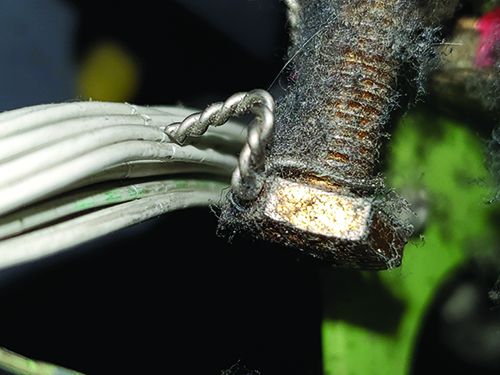On November 6, 2019, the crew of a Republic Airways Embraer EMB-175 regional jet operating a schedule passenger flight under FAR Part 121 declared an emergency shortly after takeoff from the Hartsfield-Jackson Atlanta (Ga.) International Airport. The crew reported a pitch-trim runaway and difficulty controlling the aircraft. Among other details, the jet climbed to around 14,000 feet in approximately four minutes before the crew could get the airplane under control and return. Additional pitch-trim excursions occurred before the airplane safely landed with no injuries, including the crew reporting to ATC that they were stalling as they attempted to line up for a landing.
Based on preliminary findings from its ongoing investigation of the incident, the NTSB has issued 10 safety recommendations to address safety issues identified in the investigation. Six of the recommendations were directed to the National Civil Aviation Agency of Brazil (ANAC) and four to the FAA. The recommendations are designed to address areas of concern including wire chafing, application of Embraer service bulletins relating to the pitch trim switch and potential limitations in checklist memory items for pilots to address unintended operation of the pitch trim system.

Although the incident remains under investigation, examination revealed chafed insulation around wires connecting the horizontal stabilizer actuator control electronics to the captain’s pitch trim switch and autopilot/trim disconnect button, the NTSB said. The chafing was caused by contact with the incorrectly untucked pigtail of the forward mechanical stop bolt safety wire. The images below detail the damage and the safety wire installation.
“When the captain’s pitch trim switch was removed from the yoke,” according to the Safety Board, “marks were observed that indicated at some point before the incident flight, the pitch trim switch had been installed in an inverted position.”
Embraer had previously issued three service bulletins related to pitch trim switch installation error following flight-crew reports in 2015 detailing flight control system difficulties. However, neither the FAA nor the ANAC required operators to perform the steps detailed in the service bulletins. “While it is not yet known if inverted switch installation was a factor in the incident, the NTSB is concerned the condition could lead to flight crew confusion, delaying appropriate recognition of and response to increased control forces,” it said.
“Preliminary information from the NTSB’s investigation also suggests that unintended pitch trim operation may be masked and go undetected during certain phases of flight, such as during takeoff. Further, limitations in the checklist memory items may delay pilots in properly responding to and regaining control of the Embraer EMB-170/175/190/195 and Lineage 1000 series airplanes. The NTSB is concerned the crew’s application of the memory item(s) on the EMB-175 Pitch Trim Runaway checklist may not comprehensively address circumstances of the trim system operation in a timely manner,” the NTSB said. The 10 safety recommendations are based on preliminary findings from the NTSB’s ongoing investigation.
“Issuing these 10 safety recommendations early in the investigation demonstrates the NTSB’s commitment to take action as soon as we’ve identified and verified a safety issue that needs to be addressed,” said NTSB Chairman Robert Sumwalt. “We don’t need to wait for an investigation to be completed before issuing safety recommendations. We have the responsibility to issue recommendations that when implemented by recipients, can correct safety deficiencies, prevent accidents, and save lives,” Sumwalt added.
“The NTSB’s investigation of the incident is ongoing and as such, no conclusions about probable cause should be drawn from the information provided in the safety recommendation report,” the Safety Board said.
FAA Revises ADS-B Advisory Circular
The FAA on December 20, 2019, published Revision B to its Advisory Circular (AC) 90-114, which provides what the agency calls comprehensive guidance for operations in U.S. airspace. Notable changes in this revision of the AC include clarification of operational policies during formation flying activities (Section 4.3.1) and during aerobatic flight (Section 4.3.2.6.2), plus procedures for dealing with inoperative ADS-B equipment (Section 4.3.4.2).
Among the AC’s revisions is an FAA statement that “flight monitoring has shown that aircraft engaged in aerobatic and agricultural operations may fail to meet applicable equipment performance requirements due to maneuvering that exceeds the design limits….” Such events are not considered to involve non-performing equipment and affected aircraft are expected to meet ADS-B Out equipment performance requirements in other flight operations.




